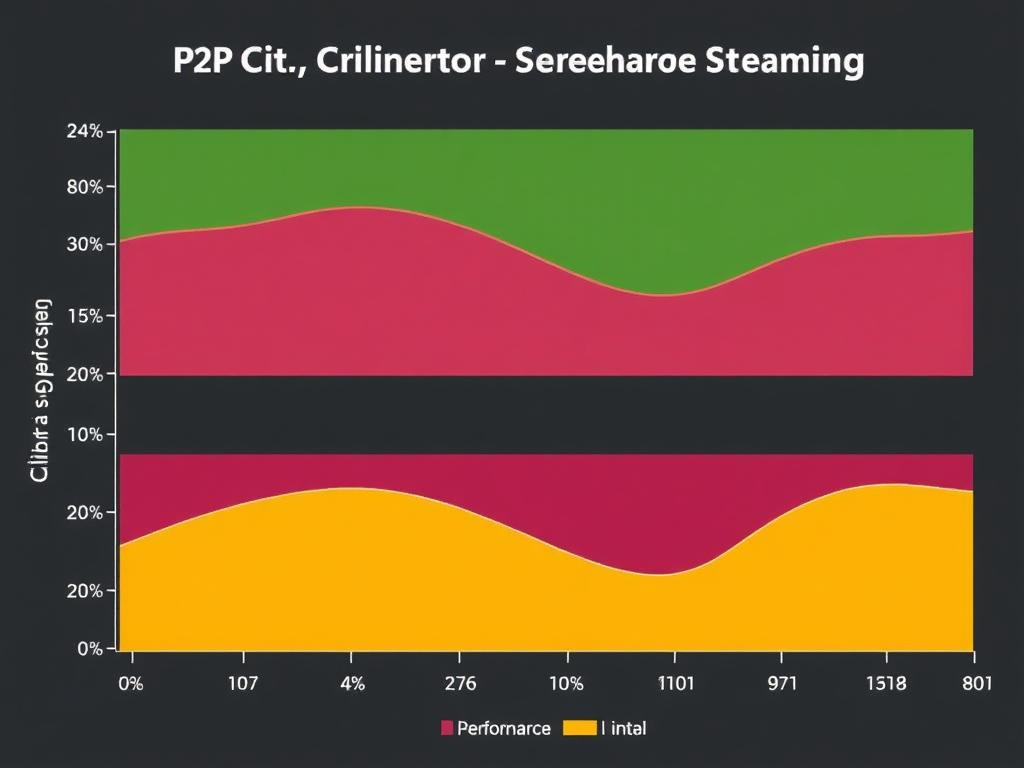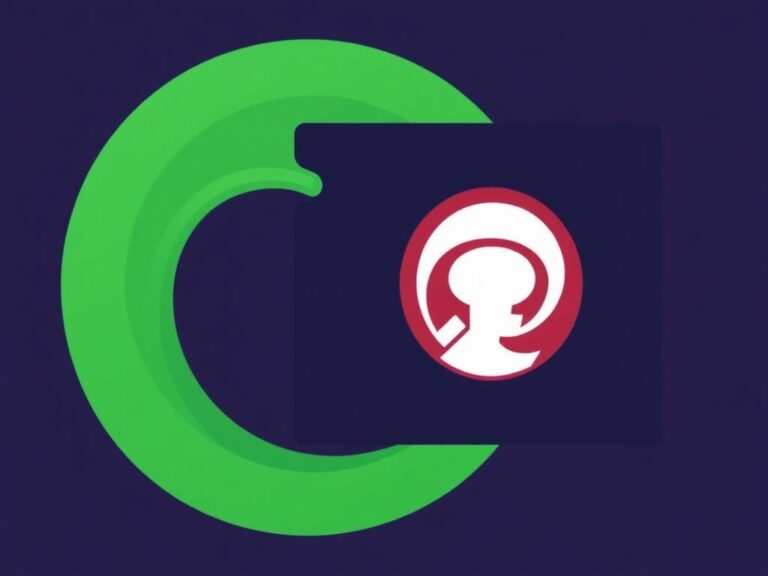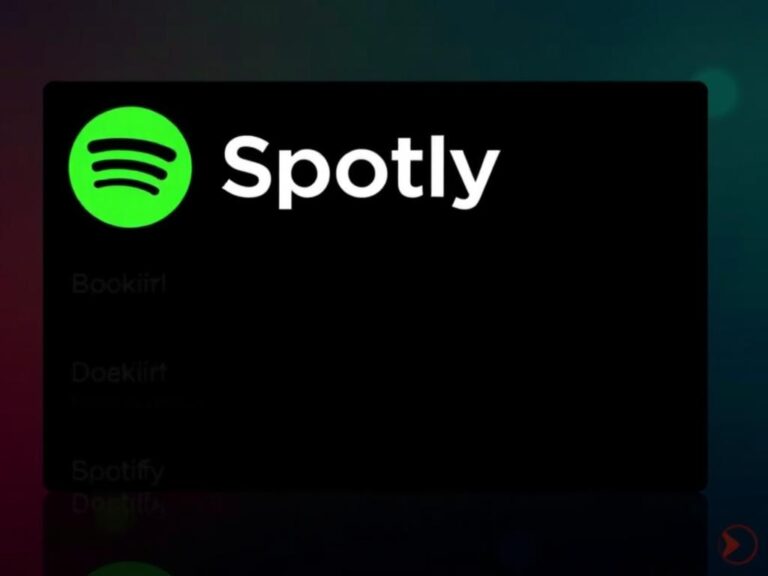P2P vs. Client-Server Streaming: Performance Comparison
Understanding Streaming Architectures: P2P and Client-Server
When it comes to delivering streaming content over the internet, two primary architectures dominate the landscape: Peer-to-Peer (P2P) and Client-Server streaming. Both of these models have unique operational structures that influence their performance, scalability, and user experience. Whether you’re a casual viewer, content creator, or network professional, understanding the fundamental differences between these architectures will help you appreciate why streaming platforms choose one over the other.
In a Client-Server streaming system, the client devices (viewers) request content directly from centralized servers. These servers store all the media files or live streams and handle the distribution to all requesting clients. This model is straightforward—it’s like ordering food from a restaurant; the kitchen (server) prepares and delivers every single meal directly to each customer.
On the other hand, P2P streaming leverages the power of its users’ devices to distribute content. Instead of relying solely on a central server, viewers who receive a stream also share parts of it with other viewers. This decentralized distribution is quite like a potluck dinner, where everyone contributes by bringing something, reducing the reliance on one kitchen. This architecture has advantages and drawbacks that affect performance in different ways.
Performance Factors in Streaming Architectures
To truly compare P2P vs. Client-Server streaming, it’s important to break down the key performance factors that matter most in real-world applications. These factors influence how smoothly videos play, how quickly streams start, and how reliably content is delivered.
Latency and Start-Up Time
Latency is the delay between requesting streamed content and playback starting, often described as start-up time. Client-Server streaming typically offers lower latency because requests go directly to powerful central servers optimized for fast response. However, during peak times, server load can increase, potentially causing pauses or buffering.
P2P streaming involves connecting to multiple peers simultaneously, which can create initial delays due to peer discovery and data exchange overhead. Nonetheless, once peers are established, data can flow more efficiently, benefiting from multiple sources. This can help reduce buffering, provided the peers’ upload bandwidth is sufficient.
Scalability Under Load
One of the most significant differences lies in how each system handles scalability. Client-Server architecture depends heavily on server capacity and bandwidth. As more users join the stream, server load rises proportionally, requiring investment in more servers or higher network capabilities. Otherwise, performance deteriorates, causing buffering and failed connections.
In contrast, P2P streaming leverages users’ collective bandwidth and computing resources. When more users join, the network potentially grows stronger because each new participant adds to the swarm of peers sharing content. This makes P2P inherently more scalable and cost-effective from a provider’s perspective.
Quality and Reliability
Maintaining high video quality consistently is a challenge for both systems. Client-Server streaming can offer stable quality by controlling the server environment, using adaptive bitrate streaming techniques, and allocating sufficient bandwidth. However, it can be vulnerable to server outages or network congestion.
P2P streaming depends on the availability and upload speed of peers. If many peers disconnect or have poor connections, stream quality can suffer due to insufficient data sourcing, resulting in degraded video quality or interruptions. Some advanced P2P systems implement mechanisms to mitigate these issues, but they remain a concern.
Detailed Comparison of P2P vs. Client-Server Streaming Performance
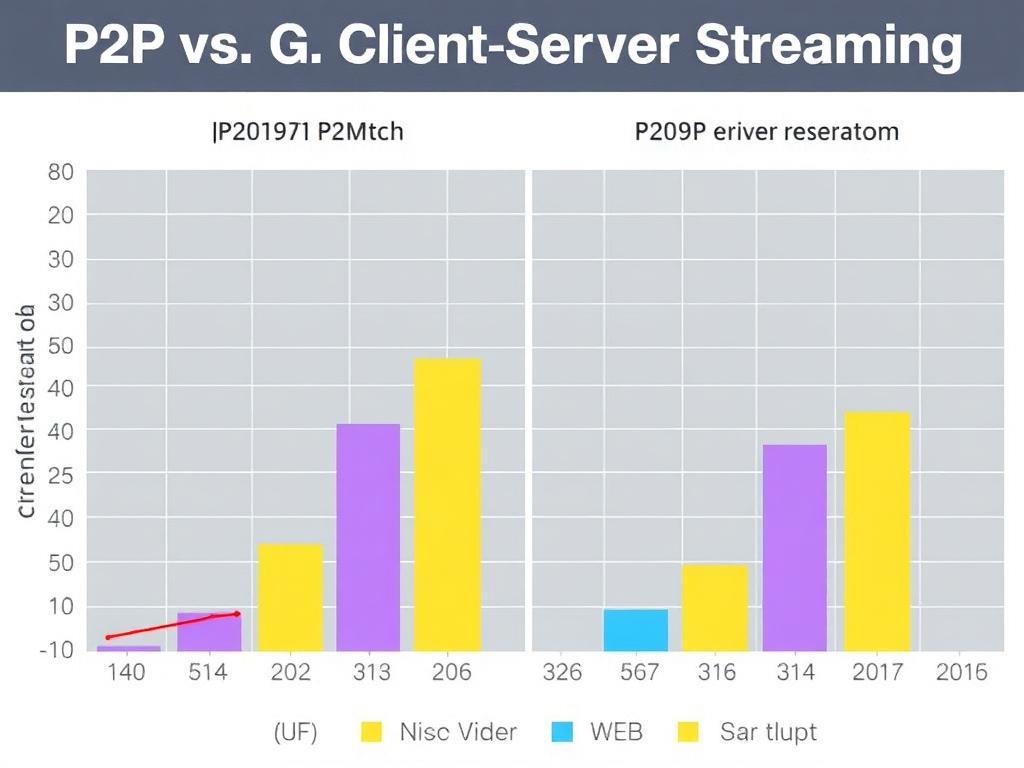
To better visualize how these architectures stack up, consider the following table summarizing key performance attributes:
| Performance Attribute | P2P Streaming | Client-Server Streaming |
|---|---|---|
| Latency | Variable, higher initial delay due to peer discovery | Generally low, fast direct response |
| Scalability | Highly scalable, grows with users | Limited by server capacity |
| Bandwidth Usage (Provider) | Reduced, users share bandwidth load | High, all traffic through servers |
| Quality Stability | Can fluctuate based on peers | Relatively stable and controllable |
| Infrastructure Cost | Lower, less server investment | Higher, requires scaling servers and CDN |
| Security and Control | More challenging to control and secure | Easier to manage and protect content |
When to Choose P2P or Client-Server Streaming?
The choice between P2P vs. Client-Server streaming depends on the goals of your streaming service and the expected audience experience.
Ideal Scenarios for P2P Streaming
- Massive Live Events: Events with high concurrent viewership, where server bandwidth would be prohibitively expensive.
- Cost-sensitive Applications: Startups or platforms with limited budgets benefit from low infrastructure costs.
- Community-driven Content: Platforms that rely on user collaboration, such as decentralized networks or blockchain-based systems.
Ideal Scenarios for Client-Server Streaming
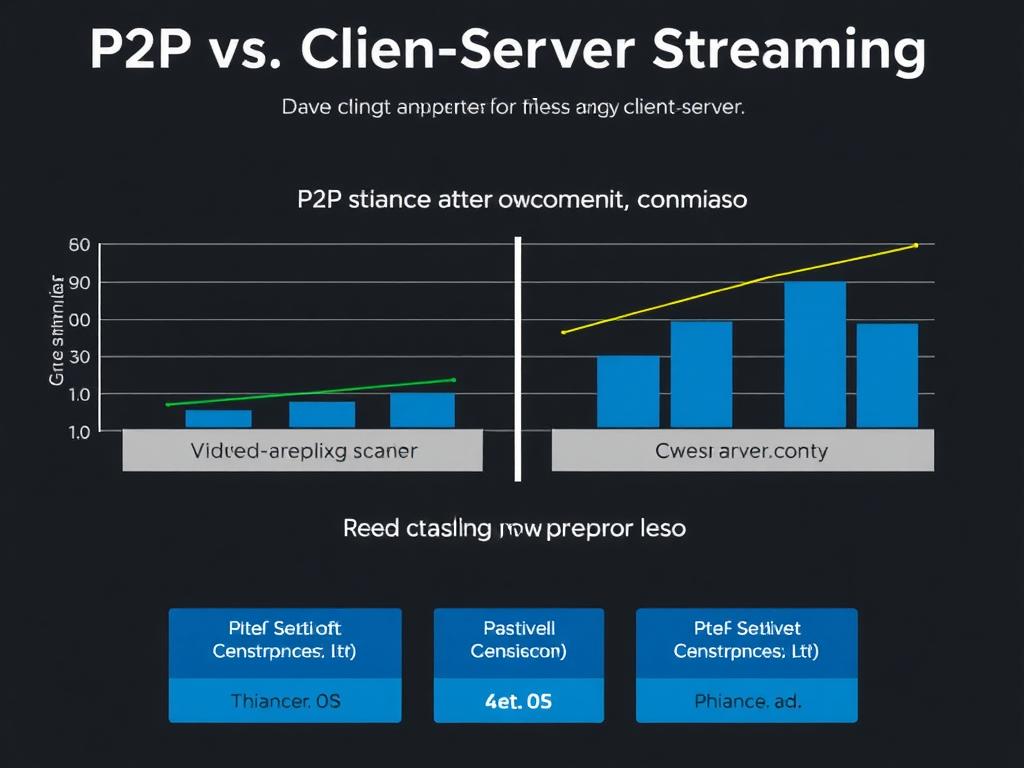
- High-Quality Video Demands: Platforms promising consistent HD or 4K quality with minimal interruptions.
- Content Control and Security: Services where DRM and content protection are critical, such as premium entertainment or educational content.
- Predictable User Base: Applications with known traffic profiles and stable user numbers, suitable for dedicated server investment.
Technology Advances and Hybrid Approaches
Interestingly, the gap between P2P and Client-Server streaming performances is closing thanks to technological innovation. Many platforms now use hybrid architectures that combine the two models. For example, a streaming service could use centralized servers for initial content delivery and then rely on P2P sharing for distributing parts of the content among users.
This hybrid approach offers the best of both worlds: the reliability and control of client-server models,
coupled with the scalability and cost-efficiency of P2P networks. Advances in algorithms and protocols continue to improve peer discovery, data integrity, and latency mitigation to make P2P streaming more competitive.
Key Terms Explained
To bring clarity to some technical terms frequently mentioned in discussions about P2P vs. Client-Server streaming, here’s a quick glossary:
| Term | Description |
|---|---|
| Latency | The delay between a request and response in streaming; lower latency means quicker start-up and responsiveness. |
| Adaptive Bitrate Streaming | A technique where the video quality dynamically adjusts based on the user’s network conditions. |
| Swarm | In P2P, the collective group of peers sharing pieces of the content with each other. |
| Content Delivery Network (CDN) | A distributed network of servers used by client-server architectures to deliver content closer to users. |
| DRM (Digital Rights Management) | Security measures that protect streamed content from unauthorized use or piracy. |
Future Prospects of Streaming Architectures
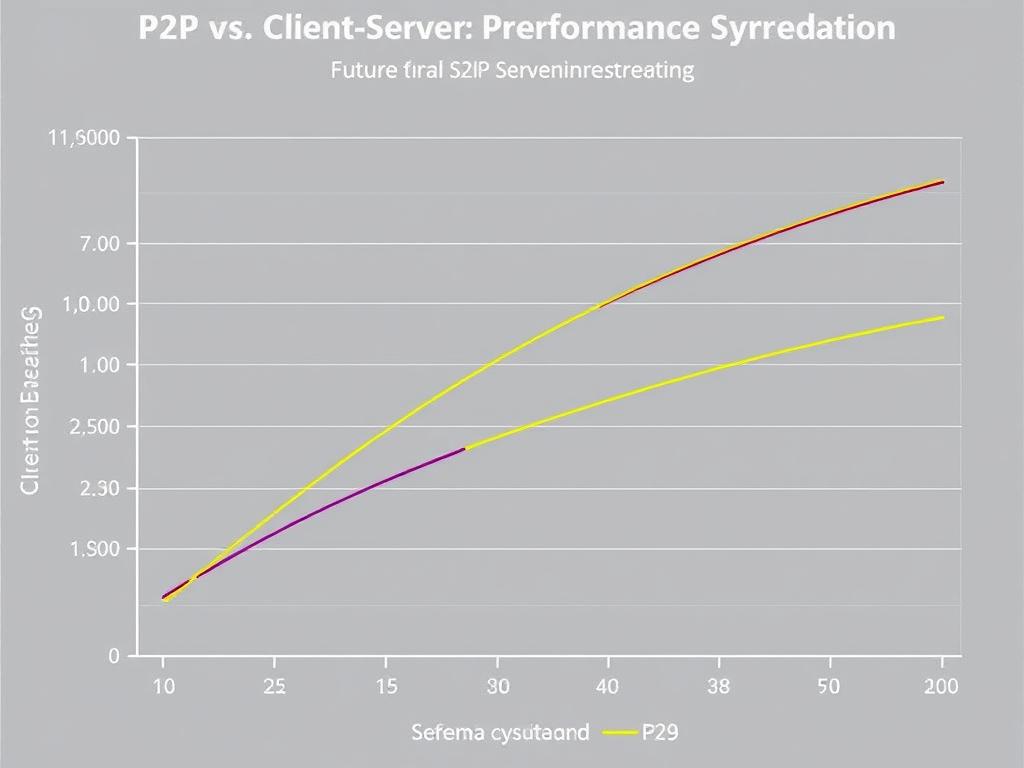
As broadband speeds increase and edge computing becomes more prevalent, the streaming landscape is poised for exciting changes. P2P streaming will likely gain traction in emerging markets where infrastructure is limited, providing an affordable way to deliver rich media content. Simultaneously, client-server architectures will evolve with AI-based optimizations and smarter CDN deployments.
In the end, no single solution fits all needs perfectly. The ongoing competition and collaboration between P2P and Client-Server streaming models will push innovation, leading to even better viewing experiences for audiences worldwide.
Conclusion
In the comparison of P2P vs. Client-Server streaming, both architectures present distinct advantages and challenges depending on the performance factors relevant to the streaming application. Client-server systems excel in providing stable, low-latency, and high-quality streams but require substantial infrastructure investment and face scalability constraints. Meanwhile, P2P streaming shines in scalability, bandwidth efficiency, and cost-effectiveness, though it may suffer from variable latency and fluctuating stream quality due to peer availability. Emerging hybrid models and technological advances continue to blend these approaches, optimizing performance for diverse user needs. Ultimately, understanding these nuances empowers content providers and consumers to make informed choices about the streaming technologies that best suit their goals and environments.
